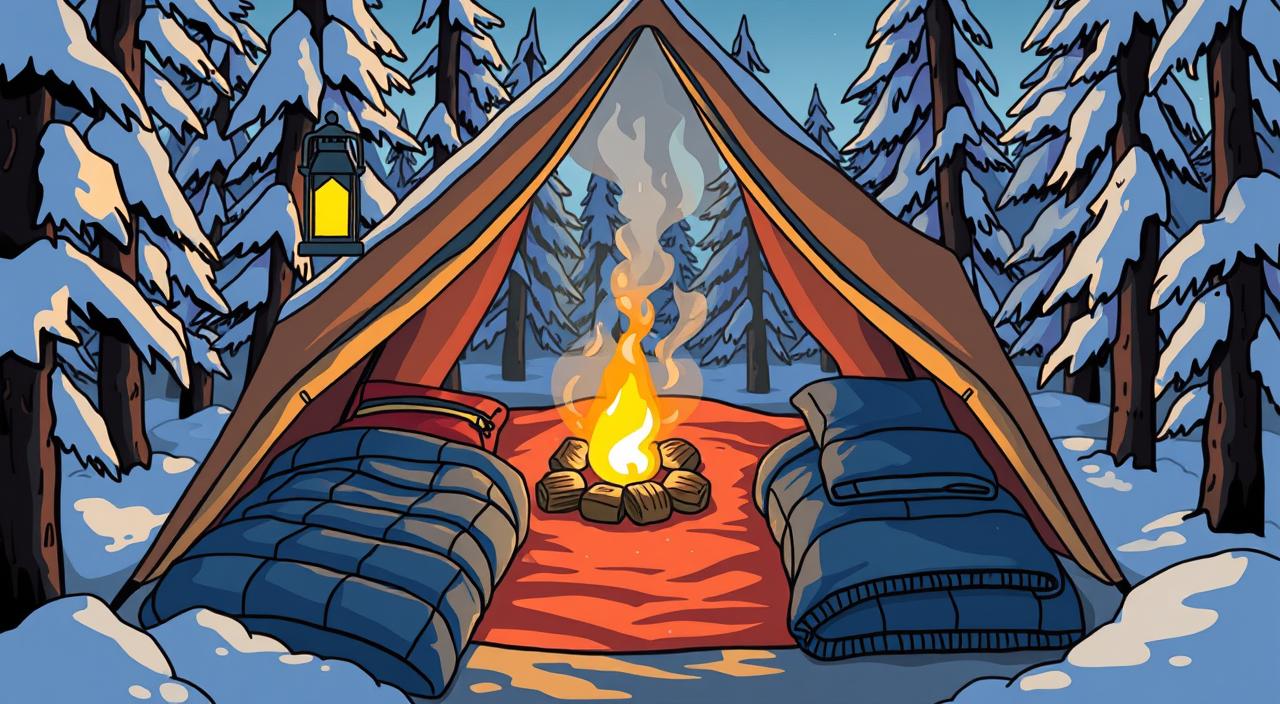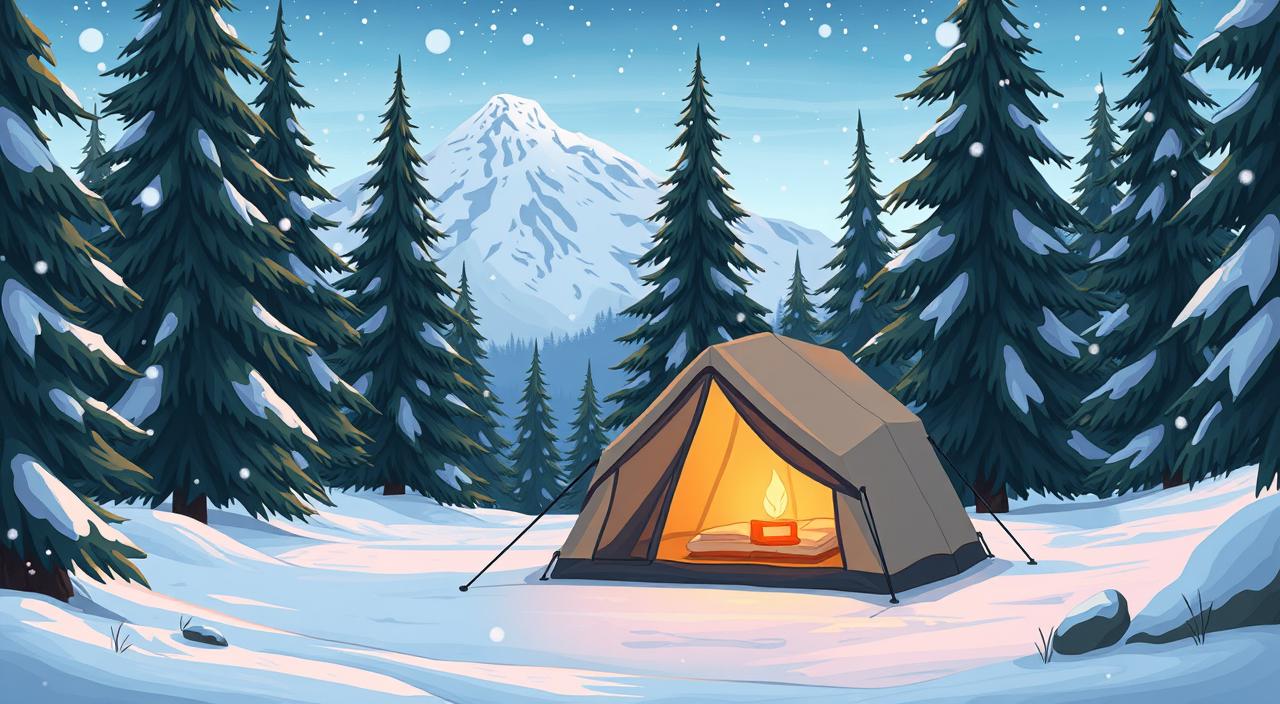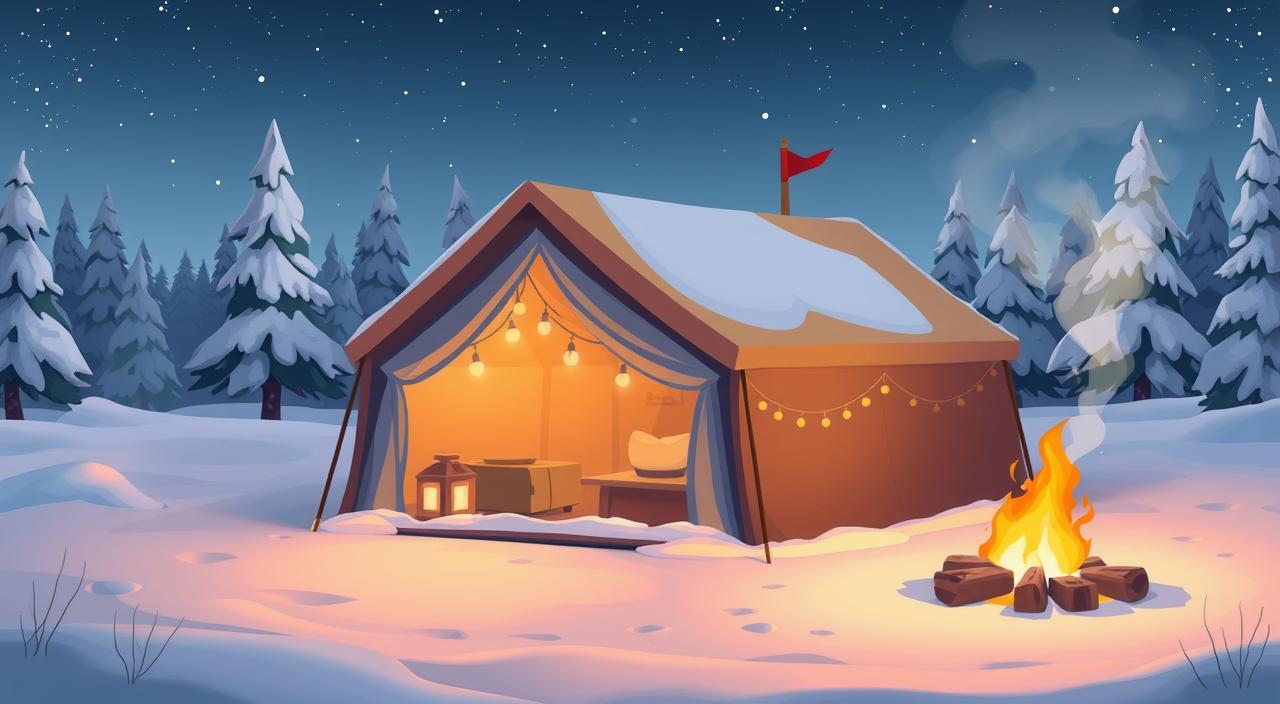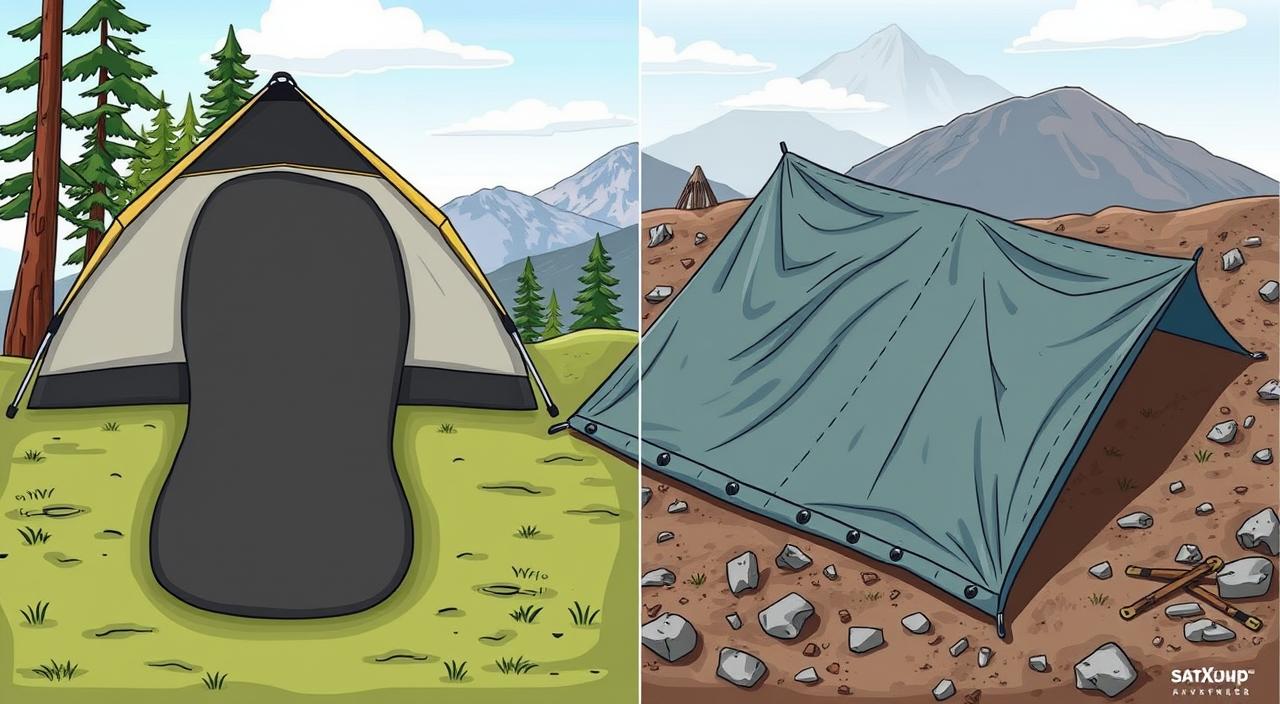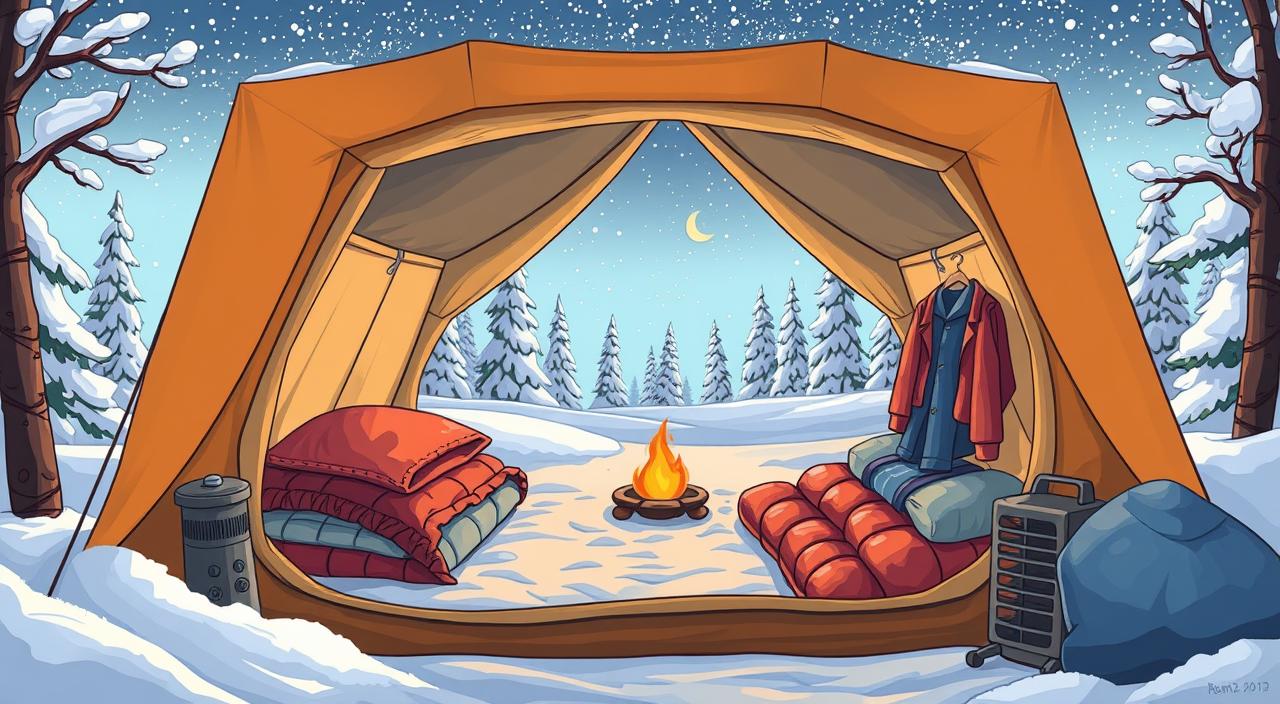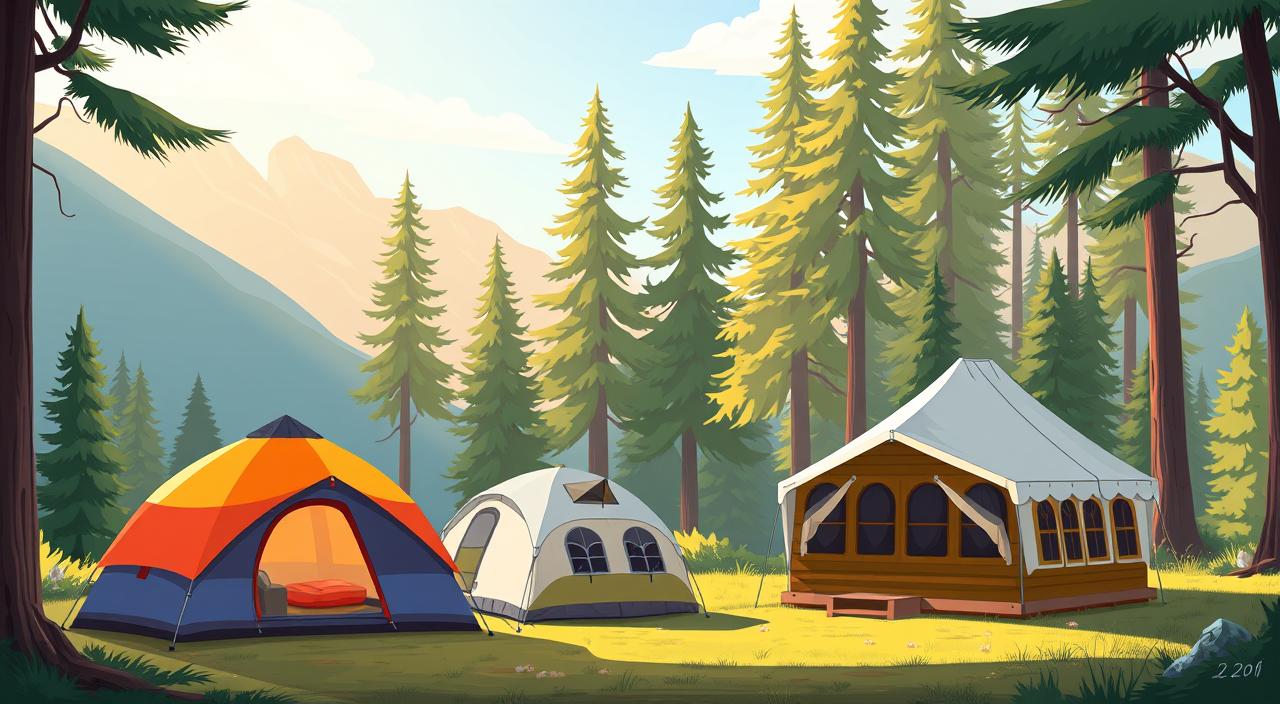
Disclaimer: This post may contain affiliate links. As an Amazon Associate, we earn from qualifying purchases.
Ever wondered why some campers love the outdoors while others find it tough? Knowing the 4 types of tents can change your camping game. It makes sure you enjoy every moment under the stars.
This article will show you the must-have camping tents. You’ll see how each type meets different camping needs. Whether you’re new to camping or a pro, this guide will highlight the best tents for your adventures.
Key Takeaways
- Knowing the 4 types of tents is key for great camping.
- Each tent type has its own purpose, making sure you’re comfy and safe.
- Picking the right tent can really boost your outdoor fun.
- Understanding what each tent offers helps you choose the best for you.
- Looking after your tent well makes it last longer and work better.
Introduction to Camping Tents
Camping tents are key for your outdoor adventures. They provide shelter and comfort in all kinds of weather. It’s important to know the different types of tents to pick the right one for you. You can choose from classic canvas tents to modern, lightweight ones that are easy to set up.
When picking a tent, think about how many people it will hold, its weight, and how long it lasts. Family tents can fit four or more people. On the other hand, backpacking tents are much lighter, weighing from 0.5 to 10 pounds. So, whether you’re planning a family vacation or a solo hike, knowing your options helps you make a good choice.
Later on, we’ll explore each type of tent in detail. This will help you understand their features and benefits better. With this knowledge, you can make the most of your camping trips, staying dry and comfortable in the great outdoors.
Why Choosing the Right Tent Matters
Choosing the right tent is key to a great camping trip. It keeps you safe from the weather and gives everyone enough room. But, picking the wrong tent can make you uncomfortable, make setting up hard, and expose you to bad weather.
When picking a tent, think about what you need based on a few important factors:
- Occupancy: Think about how many people will sleep in the tent. Tents can feel crowded at their max capacity. So, it’s smart to get a tent that can fit one more person for more comfort.
- Intended Use: Different tents are made for different needs. Backpacking tents are light and easy to carry. Family tents have more space for everyone to relax.
- Weather Resistance: Look for a tent with a good rainfly and good airflow. A well-ventilated tent stays cool when it’s hot outside. A big rainfly keeps it warm when it’s cold.
- Ease of Use: Some tents are easier to set up than others. Freestanding tents are usually quicker to put up. Ones that need stakes can take longer.
- Durability: Check the materials like nylon or polyester. Also, look at the quality of the poles and features like vestibules and guylines.
Being able to stand up and move around in your tent makes camping more comfortable. Choosing a tent with these features makes your trip fun and worry-free.
| Factor | Importance | Features to Consider |
|---|---|---|
| Occupancy | Maximizes comfort | Upgrade by one person; tent size ratings |
| Intended Use | Meets specific needs | Style options: backpacking, family, specialty |
| Weather Resistance | Prevents discomfort | Rainfly, ventilation, quality materials |
| Ease of Use | Reduces setup time | Freestanding vs. non-freestanding; pole configurations |
| Durability | Ensures long-lasting use | Material quality; tent poles; additional features |
4 Types of Tents
Camping tents come in many designs, each suited for different needs and activities. Backpacking tents are great for adventurers on the move. They are lightweight and easy to carry. Knowing what makes a tent good can help you pick the right one for your next trip.
Backpacking Tents
Backpacking tents are all about being light and easy to carry. They fit one to three people and use strong yet light materials. These tents are easy to set up, perfect for quick stops on long hikes. They also stand up to bad weather, so you can sleep comfortably no matter what.
Key Features and Benefits
Backpacking tents have many benefits thanks to their special features. Here are some key points that make your camping trip better:
- Lightweight Design: These tents are very light, weighing 2 to 4 pounds, making them easy to carry.
- Compact Size: They pack down small, so they fit in your backpack easily.
- Quick Setup: Many models set up fast, saving you time when you get to your campsite.
- Weather Protection: With rainflies and waterproof fabrics, they keep you dry in the rain and wind.
- Versatility: They’re great for different places and ways of camping, from national parks to casual trips.
| Feature | Description |
|---|---|
| Weight | 2 to 4 pounds, enhancing portability |
| Size | Compact and easy to pack |
| Setup | Quick and efficient for immediate use |
| Durability | Made from strong, waterproof materials |
| Capacity | Accommodates 1 to 3 campers comfortably |
Backpacking tents offer many advantages, combining comfort with easy transport. With the right choice, your outdoor adventures will be more fun. You can enjoy the journey more, without worrying about the gear.
Family Tents
Planning a camping trip with your family means you’ll need a good tent. Family tents offer lots of space for everyone to be comfortable. They often have room dividers, so families can have both shared and private areas. This makes them great for family camping trips.
Spacious Designs for Group Comfort
Today, there are many family tents to choose from. Here are some popular ones:
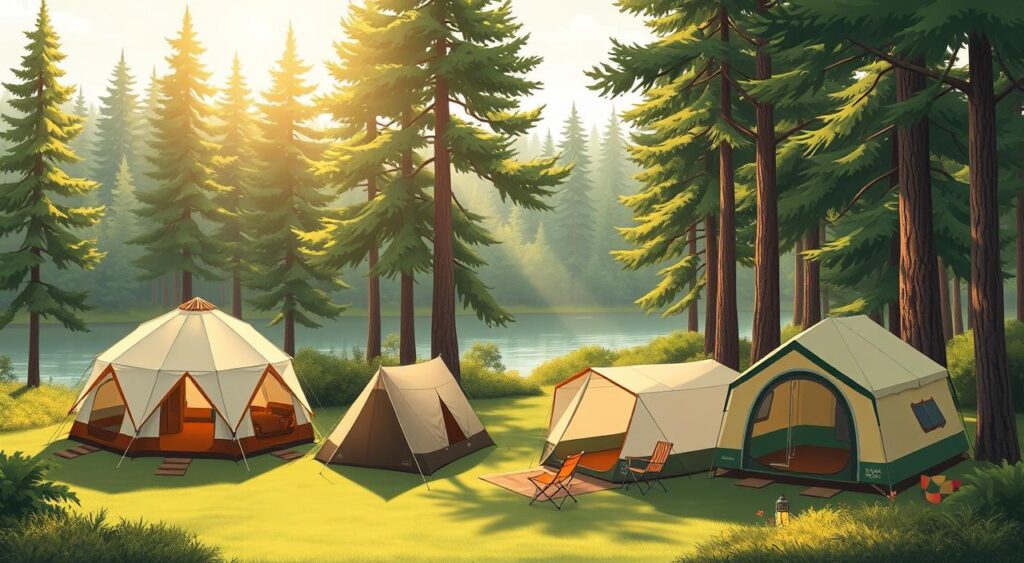
Popular Family Tent Models
There are many models for different group sizes and camping styles. Here’s a quick look at some popular ones:
| Model | Dimensions | Height | Weight | Packed Size |
|---|---|---|---|---|
| Eureka Copper Canyon LX8 | 13′ x 10′ | 7′ | 33.5 lbs | 11″ x 29″ |
| NEMO Aurora Highrise 6P | 100″ x 120″ | 77″ | 18 lbs 10 oz | 26″ x 9.5″ x 9.5″ |
| MSR Habiscape | 95″ x 95″ | 73″ | 12 lbs 11 oz | 24″ x 9″ |
| Magellan Outdoors Pro SwiftRise | 4-Person | 6.5′ | 24 lbs | N/A |
When picking a family tent, think about what your family needs. Consider the number of rooms, how easy it is to set up, and your budget. Get ready for an adventure in these spacious camping tents!
Dome Tents
Dome tents are a favorite among campers for their unique design and versatility. They have flexible poles that make them stable in different outdoor settings. These tents can fit up to four people, making them perfect for family trips and casual camping.
Structure and Stability
The strong design of dome tents makes them stable in tough weather. Their rounded shape lets rain run off easily, preventing water from pooling inside. This keeps the tent strong against strong winds, so you can enjoy your trip without worrying about the weather.
Best Uses for Dome Tents
Dome tents are great for many camping situations. Here are some of the best ways to use them:
- Great for family camping trips
- Ideal for short hiking excursions
- Perfect for backyard camping adventures
- Suitable for festivals and outdoor events
| Feature | Advantage |
|---|---|
| Flexible Pole Structure | Enhances tent stability in various weather conditions |
| Easy Setup | Pitches quickly, allowing for more time to enjoy the outdoors |
| Compact Design | Lightweight and portable, making them perfect for backpacking |
| Good Ventilation | Helps manage heat and humidity inside the tent |
Dome tents are a reliable choice for those wanting to enjoy the outdoors comfortably.
Cabin Tents
Cabin tents are great for family camping because they are spacious and comfortable. They have vertical walls, so you can stand up inside. This makes them perfect for long camping trips. You can bring all your gear without feeling crowded.
These tents often have multiple rooms and screens to keep bugs out. This makes your camping trip better. The Kodiak Canvas 12×12 Cabin Lodge Tent SR is a popular choice, priced at $999.99. It has a strong structure and has gotten 105 reviews.
For those wanting more luxury, the Kodiak Canvas 26×8 ft. Grand Cabin Canvas Camping Tent costs $999.99. It offers lots of space and comfort for big families.
Luxury and Space for Family Camping
Cabin tents are made for families, offering lots of room. They have strong structures with windows for air and heavy-duty floors for comfort. For example, the Kodiak Canvas 12 x 9 ft. Canvas Cabin Camping Tent with Deluxe Awning costs $879.99. Campers like it for its luxury and reliability.
Pros and Cons of Cabin Tents
Cabin tents have both pros and cons. Knowing these can help you decide:
| Pros | Cons |
|---|---|
| Spacious interior allows for comfortable standing and movement | Heavier than other camping tents, making transport more difficult |
| Multiple rooms provide privacy and separation for different family members | More complicated setup compared to simpler designs |
| Great ventilation options with multiple windows | Best suited for car camping, not ideal for backpacking |
| Durable materials ensure weather resistance | Can be more expensive than basic camping tents |
Thinking about the pros and cons of cabin tents can help you see if they fit your family’s needs. With options like the Kodiak Canvas 10×10 Cabin Lodge Tent SR for $799.99, there are many models to choose from.
Pop-Up and Instant Tents
Pop-up tents and instant tents are great for spontaneous camping trips or festival adventures. They set up in just a few minutes, letting you enjoy the outdoors more.
Quick Setup for Festivals
Pop-up tents are made with you in mind. Just throw them in your car and they’re ready for action. For example, the Coleman 2-Person Pop Up Tent sets up in 15 seconds. The Coleman 4-Person Pop Up Tent and the Magellan Outdoors Pro SwiftRise 4-Person Hub Tent are also easy to set up. They’re big enough for you and your friends, yet they’re small and easy to carry.
At festivals or casual camping trips, these tents give you quick shelter without the trouble of complicated setup.
Limitations and Considerations
Pop-up and instant tents are great for quick setup, but they have some downsides. Models from Coleman might not handle bad weather well. The Coleman 4-Person Tent is about 39 inches tall, but setting it up quickly might make it less stable.
These tents need extra stakes and guy lines to stay stable in the wind. Keep this in mind if you plan to camp in windy places.
Here’s a table comparing some popular pop-up and instant tents:
| Tent Model | Peak Height | Weight | Setup Time | Price |
|---|---|---|---|---|
| Coleman 2-Person Pop Up Tent | 32.5 inches | 5.4 pounds | 15 seconds | $80 |
| Coleman 4-Person Pop Up Tent | 39 inches | 7 pounds | 15 seconds | $105 |
| Magellan Outdoors Pro SwiftRise 4-Person Tent | 6.5 feet | 24 pounds | Under 2 minutes | $120 |
| Gazelle T4 Hub Tent | Unknown | 31.8 pounds | Under 2 minutes | $350 |
| Decathlon Quechua 2 Second Pop-Up Tent | 3 feet 4 inches | 9.6 pounds | 2 seconds | $75 |
If you value convenience in camping, pop-up and instant tents are a great choice. They’re perfect for festival-goers and casual campers. Just remember their limitations to enjoy your outdoor adventures fully.
Comparing the 4 Types of Tents
Choosing the right tent can make your camping trip better. It’s important to know the different types of tents and what they offer. This guide will help you pick the best tent for your needs.
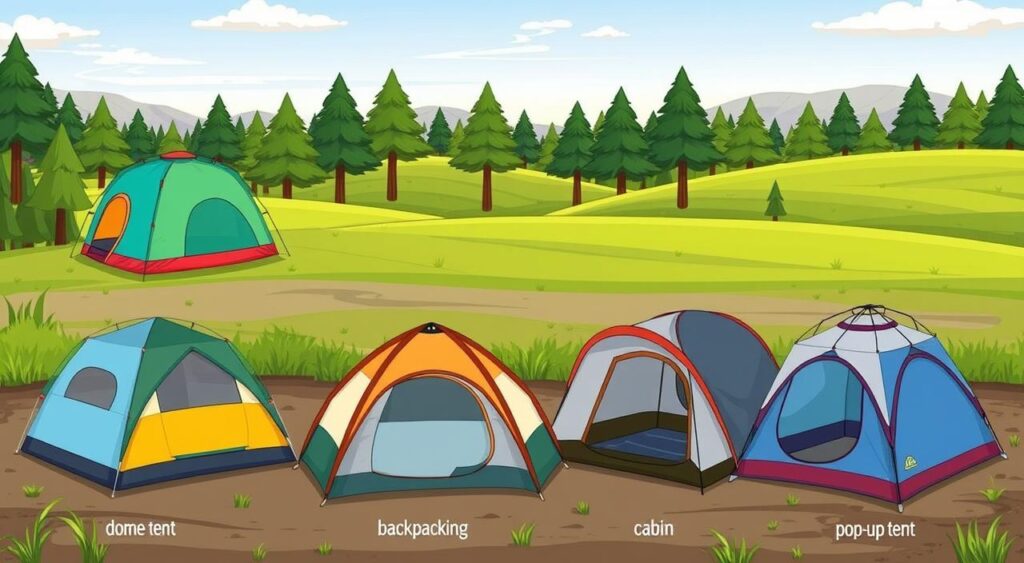
| Type of Tent | Key Features | Best For |
|---|---|---|
| Dome Tents | Lightweight, compact, stable | Backpacking, short trips |
| Family Tents | Spacious, vertical walls, multiple rooms | Extended trips for families |
| Cabin Tents | High ceilings, roomy, robust | Large groups and families |
| Pop-Up Tents | Quick setup, portable | Beach outings, short trips |
Dome tents are popular for their versatility. They work well in many camping situations. Cabin tents are great for families because they have lots of space. If you need a tent that’s easy to set up, pop-up tents are a good choice.
Each type of tent has special features for different camping needs. This makes it easier to decide which one is right for you.
Important Features to Look for in a Tent
When picking a camping tent, it’s key to know what features you need. Make sure the tent fits everyone in your group comfortably. A tent that fits one size bigger than your group is usually a good choice for extra space.
The material of the tent is crucial for its durability and how it performs. Nylon tents are light and dry fast but might not last as long as canvas tents. Canvas tents are strong and let air in but can be heavy when wet. Polyester tents protect you from the sun and don’t stretch much when wet, making them good for many camping situations.
It’s important to think about how the tent will handle the weather. Choose between three-season or four-season tents based on when you plan to camp. Three-season tents are good for spring, summer, and fall. Four-season tents are for winter camping and let you camp all year.
Look for tents with good ventilation, like those with mesh panels. These panels let air in and keep bugs out. Tents with storage spaces make it easier to keep your gear tidy. Also, check the tent’s peak height to make sure you won’t feel cramped.
Setting up the tent should be easy. Freestanding tents are quick to set up without needing stakes. Non-freestanding tents need stakes or poles but are lighter. Tents with more doors make it easier for everyone to get in and out without disturbing others. Picking the right tent features will make your camping trip more enjoyable and comfortable.
| Tent Type | Weight | Material | Weather Resistance |
|---|---|---|---|
| 3-Season Tent | 3-5 lbs | Nylon, Polyester | Light Rain, Mild Snow |
| 4-Season Tent | 4-8 lbs | Canvas, Heavier Materials | Snow, High Winds |
| Backpacking Tent | 1-4 lbs per person | Silnylon, Dyneema | Moderate Weather |
| Car Camping Tent | 10-20 lbs | Polyester, Canvas | Moderate Rain, Cool Weather |
Maintenance and Care for Tents
Keeping your tent in good shape for many trips means you need to take care of it. Proper care helps your camping gear last longer. Start by cleaning your tent regularly. It’s best to clean it by hand to avoid damage from machines.
Aim to air out the tent for at least two hours before storing it. Moisture is a big problem; make sure to dry it out before you store it. This keeps mold and mildew away, which can weaken the fabric over time.

When setting up your tent, be careful. Always put it on a flat, level ground. Using a footprint or tarp under it also helps protect the tent floor. This keeps the material safe and reduces damage from debris.
The type of rain fly you use matters too. Polyester rain flies are better at handling UV rays than nylon ones. So, they’re a good choice if your tent is often in the sun.
Looking after the tent poles and zippers is key. Don’t use elastic cords to hold the poles in place, as this can cause them to break or get stressed. This could lead to them snapping. Keep zippers clean and working well to stop the fabric from tearing.
Also, reapply waterproof coatings every few years to keep your tent dry. A typical coating lasts about two years. This keeps your tent safe from the elements.
When you’re storing your tent, roll it up tightly to get rid of any air pockets. This helps spread the stress on seams and fabric evenly, making it last longer. You can also use absorbent sachets in storage to keep moisture away. Following these tips will help your tent stay in great shape for many adventures.
Conclusion
Understanding the different types of tents for camping helps you make better choices for your outdoor adventures. You can pick from backpacking, family, dome, and cabin tents, each with its own set of features. These features meet various needs, from solo hikers needing lightweight gear to families wanting lots of space.
Choosing the best tent means thinking about how many people will be there, the weather, and your camping style. Knowing what each tent type offers can make your camping trips better. For example, dome tents are great against the wind, while canvas tents are durable and let in air.
Your choice should match what you value most in comfort and safety. This way, you’ll have a great time in nature. Having the right tent not only makes camping trips better but also deepens your bond with nature. Whether it’s a short weekend trip or a long journey, the right tent will be your reliable home in the wild.


